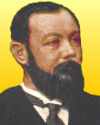
On 10 Apr 1863, Paul-Louis-Toussaint Héroult was born, the French chemist who invented the electric-arc furnace.
In this early Scientific American article from 1891, you can read of the status at that time of a familiar element, for which Héroult devised a non-smelting process to separate it from its ore.

In 1633, an unripe bunch of bananas was given to apothcary Thomas Johnson by John Argent, President of the College of Physicians (who received it from a merchant just returned with it from the Bahamas). Johnson hung it at his shop in Snow Hill, London, where it ripened about the beginning of May, and lasted until June. Being the first bananas seen in Britian, the display caused a sensation.
Beginning in the nineteenth century, the banana was cultivated in plantations, created by a ruthless and increasingly powerful company. The history of the big business of banana production and distribution includes controversy, deceit, violence, exploitation, and involvement in a bloody coup.
Today's book pick is: Banana: The Fate of the Fruit That Changed the World, by Dan Koeppel, who also describes what is known of the beginnings of the banana itself, and its place in modern agriculture and world markets. It is a seedless fruit with a unique reproductive system, by which every banana is a genetic duplicate of the next, and therefore susceptible to the same blights. Today’s yellow banana, the Cavendish, is increasingly threatened by such a blight—and there’s no cure in sight.
It is available from Amazon, typically about New from $16.80. Used from $1.93. (As of earlier time of writing - subject to change.)
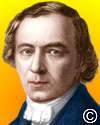 | In chemistry, our theories are crutches; to show that they are valid, they must be used to walk... A theory established with the help of twenty facts must explain thirty, and lead to the discovery of ten more. |
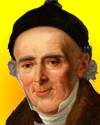 | I do not know if I am mistaken, but it seems that one can obtain more truths, important to Humanity, from Chemistry than from any other Science. |
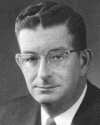 | The structure known, but not yet accessible by synthesis, is to the chemist what the unclimbed mountain, the uncharted sea, the untilled field, the unreached planet, are to other men … The unique challenge which chemical synthesis provides for the creative imagination and the skilled hand ensures that it will endure as long as men write books, paint pictures, and fashion things which are beautiful, or practical, or both. |
| Before you look at today's web page, see if you can answer some of these questions about the events that happened on this day. Some of the names are very familiar. Others will likely stump you. Tickle your curiosity with these questions, then check your answers on today's web page. | |
| Births | |
 | Robert Burns Woodward, born 10 Apr 1917, was a Nobel Prize-winning American chemist who synthesized various complex organic substances, including quinine (which he synthesized 10 Apr 1944, his birthday); the steroids cholesterol and cortisone (1951); vitamin B12 (1971); and established the structure of many compounds. What is the best-known medical use of quinine? |
 | Paul-Louis-Toussaint Héroult, born 10 Apr 1863, invented the electric-arc furnace, widely used in making steel; and, independently of the simultaneous work of Charles M. Hall of the United States, devised the electrolytic process for preparing a certain metal from its ore. Which metal is extracted by the electrolytic processes devised separately by Héroult and Hall |
| Deaths | |
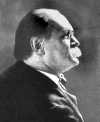 | Sam Loyd (1841-1911) was an American puzzle-maker who studied engineering and intended to become a steam and mechanical engineer but he soon made his living from his puzzles, chess problems and mathematically based games. His most famous puzzle was the 15 Puzzle which he produced in 1878. The craze swept America where employers put up notices prohibiting playing the puzzle during office hours. It remains popular to the present. What is the famous 15 Puzzle? |
| Events | |
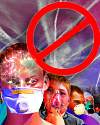 | On 10 Apr of a certain year, the United States and the Soviet Union joined some 70 nations in signing an agreement banning biological warfare. In which decade was this ban signed? |
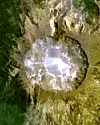 | In 1815, the massive eruption of Mount Tambora was its most powerful in 1,600 years. It formed a crater 5-miles across its island, lowered the island by 4,000 feet, and killed 10,000 people. The series of eruptions between 5 Apr and 15 Apr had worldwide effects more far-reaching than the famous 1883 eruption of Krakatoa. The record amounts of ash Tambora spewed into the atmosphere encircled the globe, screened the sun’s light and caused a global drop in temperature. In which country is Mount Tambora? |
Fast answers for the previous newsletter for April 9: ENIAC • Is there a moment in a horse’s gait when all four hooves are off the ground at once? (Yes.) • Great Eastern • mosquito • Scott Carpenter, Gordon Cooper, John Glenn, Gus Grissom, Wally Schirra, Alan Shepard and Donald Slayton.
 If you enjoy this newsletter, the website, or wish to offer encouragement or ideas, please send feedback by using your mail reader Reply button.
If you enjoy this newsletter, the website, or wish to offer encouragement or ideas, please send feedback by using your mail reader Reply button. Your click on a Facebook, StumbleUpon, or other social button on the site webpages is also a welcome sign of appreciation. Thank you for using them.
© This newsletter is copyright 2020 by todayinsci.com. Please respect the Webmaster's wishes and do not put copies online of the Newsletter — or any Today in Science History webpage. (If you already have done so, please remove them. Thank you.) Offline use in education is encouraged such as a printout on a bulletin board, or projected for classroom viewing. Online, descriptive links to our pages are welcomed, as these will provide a reader with the most recent revisions, additions and/or corrections of a webpage. For any other copyright questions, please contact the Webmaster by using your mail reader Reply button.
--
If you do not want to receive any more newsletters, Unsubscribe
To update your preferences and to unsubscribe visit this link
Executive Real Estate Business Class
-
"It was like a man with wings. It wasn't like anything you'd see on TV or in a monster movie." ...
About the publisher
Search This Blog
Blog Archive
-
▼
2020
(1542)
-
▼
April
(134)
- ANIMALS: The rush to get a dog
- On This Day for April 30 - George Washington inaug...
- Medical Association Confirms Hydroxychloroquine 90...
- Newsletter for Thursday 30 April.
- April 30: Hitler Commits Suicide but What Happened...
- SCIENCE: The Spinosaurus is scarier than we thought
- Demystified: What’s the Difference Between a Bee a...
- On This Day for April 29 - British royal wedding, ...
- Breaking News and Historians in the News from HNN
- Is this Global Infection-induced Stealth Euthanasi...
- Newsletter for Wednesday 29 April.
- April 29: The Fall of Saigon and the Master of Fak...
- Family: 12 ideas to keep kids busy this week
- TRAVEL: Seeing from afar—the best photography books
- On This Day for April 28 - Benito Mussolini execut...
- Where did those 1600 Nazi Doctors go that were bro...
- Where did those 1600 Nazi Doctors go that were bro...
- Newsletter for Tuesday 28 April.
- April 28: James Cook Lands at Botany Bay, Mutiny o...
- HISTORY: Battling a pandemic so women could vote
- On This Day for April 27 - Independence for Sierra...
- New Op Eds This Week on History News Network
- NY Policy Results in Widespread Nursing Home Elder...
- Newsletter for Monday 27 April.
- April 27: Spanish Settle in the Philippines, Labor...
- SPECIAL: Family guide: Keeping your kids moving!
- The Last Kingdom | Historical quiz questions | Rom...
- On This Day for April 26 - Chernobyl nuclear accid...
- Data tells a drastically different story than what...
- Newsletter for Sunday 26 April.
- April 26: The Great Debate, Chernobyl and Oscar Wi...
- On This Day for April 25 - Hubble Space Telescope ...
- Save your life by using a mask correctly - Can pro...
- Newsletter for Saturday 25 April.
- CORONAVIRUS SPECIAL EDITION: What you need to know...
- April 25: The Guillotine, DNA and the 1st Solar Ba...
- PHOTOGRAPHY: Honoring those who help us every day
- How A Devastating Plague May Have Hastened The Dem...
- On This Day for April 24 - Installation of Pope Be...
- This Week's Roundup Top Ten from History News Network
- Newsletter for Friday 24 April.
- COVID 19 Research, the Nuremberg Code for research...
- April 24: War! What is it Good For?
- YOUR WEEKLY ESCAPE: The secrets hidden in a 500-ye...
- Truth Needs a Champion. Is It You?
- ANIMALS: More cats with the coronavirus. Should I ...
- On This Day for April 23 - Voting for Eritrea's in...
- Newsletter for Thursday 23 April.
- April 23: Defeat of the Vikings, Robert E. Lee and...
- SCIENCE: Beyond Greta: Who’s fighting for the Eart...
- Earth Day Special Edition: Today, let the planet i...
- Demystified Video: What's Inside the Great Pyramid?
- On This Day for April 22 - First Earth Day, Miguel...
- Breaking News from History News Network
- What do you think so far?
- Newsletter for Wednesday 22 April.
- April 22: Portugal Claims Brazil, Barbara Walters ...
- TRAVEL: Marooned at sea, 95,000 people
- On This Day for April 21 - French elections held, ...
- Newsletter for Tuesday 21 April.
- Your support empowers our scientists, explorers an...
- April 21: Babur Establishes the Mughal Empire, Tir...
- The step-by-step plan we are experiencing is expla...
- HISTORY: When George Washington was an epidemic fi...
- On This Day for April 20 - Explosion on the Deepwa...
- This Week's New Op-Eds on History News Network
- Corrected Link: Globalist Plan Rolling Out now cre...
- Globalist Plan Rolling Out now creating global pol...
- Newsletter for Monday 20 April.
- April 20: Pasteurization, Marie Curie Isolates Rad...
- SPECIAL: Coronavirus family guide: 'Back' to school
- VE Day at 75 | The scandalous lives of the Byrons
- On This Day for April 19 - American Revolution beg...
- Newsletter for Sunday 19 April.
- April 19: The 'Shot Heard Round the World' and How...
- Family: It's almost Earth Day! Create your own saf...
- The Compass: Earth Day 50th anniversary edition
- On This Day for April 18 - The midnight ride of Pa...
- Major Media (Fox included) Lies for the Deep State...
- Newsletter for Saturday 18 April.
- Our award-winning storytelling goes further.
- April 18: The 'Regulars are Coming!' and the Life ...
- CORONAVIRUS SPECIAL EDITION: People are having biz...
- PHOTOGRAPHY: On the ground in Nairobi as COVID-19 ...
- On This Day for April 17 - Canada Act proclaimed, ...
- The Roundup Top Ten from History News Network!
- Newsletter for Friday 17 April.
- April 17: The Bay of Pigs Invasion and the Boxing ...
- YOUR WEEKLY ESCAPE: Majestic photos of the tallest...
- Free Download: Britannica's Chrome Extension
- ANIMALS: The quarantine lifeline of a dog (or cat)
- On This Day for April 16 - Harriet Quimby's flight...
- Newsletter for Thursday 16 April.
- April 16: Madame Tussaud's Bloody Background
- SCIENCE: Ways to see what the world could be
- Discover Ancient Sparta with National Geographic H...
- Demystified: Can Eating Too Many Carrots Make Your...
- On This Day for April 15 - Sinking of the Titanic,...
- Breaking News from HNN
- Newsletter for Wednesday 15 April.
-
▼
April
(134)
-
Blogroll
-
About
HistoryFact










0 comments:
Post a Comment